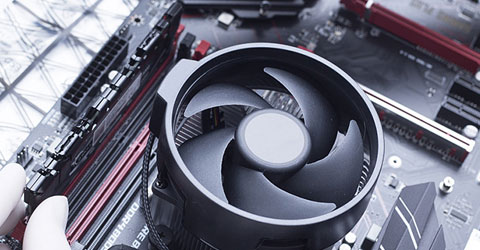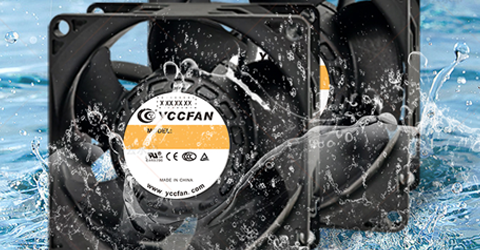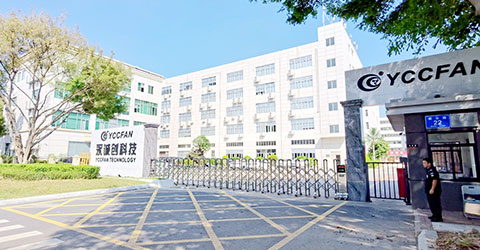How to Extend the Lifetime for Micro Fans?
This article explores how to extend the operational life of micro fans by addressing both usage practices and system-level design. YCCFAN’s micro fans are specifically engineered for durability, low-noise operation, and broad application compatibility, making them an ideal choice for demanding environments where reliability matters most.
If you're new to micro fans, learn more about their core purpose and applications here.
https://www.yccfan.com/articledetail/515.html
1.Understanding What Affects Micro Fan Lifespan
Extending the operational life of a micro fan begins with understanding the underlying stress factors that influence its durability. From mechanical design to environmental exposure, a range of variables collectively impact how long a fan can perform reliably. Below, we break down the primary causes of premature wear and what to watch for.
Curious how YCCFAN ensures superior durability and performance? Discover why our micro electric fans stand out.
https://www.yccfan.com/articledetail/491.html
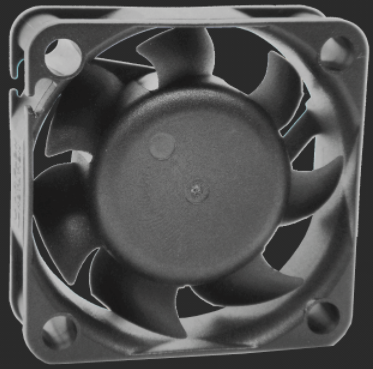
1.1 Mechanical Wear and Bearing Design
The longevity of a micro fan is largely dictated by its bearing type—most commonly ball bearings or sleeve (oil-impregnated) bearings. Ball bearings are known for their resilience, especially in demanding conditions involving higher speeds or elevated temperatures. They offer consistent performance over time but tend to generate slightly more noise.
Sleeve bearings, on the other hand, operate more quietly and are generally cost-effective. However, they are more susceptible to wear, particularly when mounted vertically or used in environments with inconsistent temperatures. Over time, lubricant evaporation, shaft friction, and axial misalignment can contribute to declining efficiency and eventual mechanical failure.
Factors such as continuous vibration, excessive dust, or insufficient ventilation can accelerate this process by disrupting the lubrication or causing micro-shifts in alignment. These seemingly small issues often accumulate, leading to a noticeable drop in RPM, increased noise, or even total fan failure.
1.2 Electrical Instability and Motor Stress
Micro fans rely on steady electrical input for optimal performance. Irregularities such as voltage dips, power surges, or frequent switching cycles can create thermal and electrical stress inside the motor windings and driver circuits. This stress may not produce immediate symptoms, but over time it accelerates internal degradation.
Implementing circuit protection—such as transient voltage suppressor (TVS) diodes or dedicated voltage regulators—can reduce this risk significantly. These protective components help smooth out irregular power delivery, stabilize current flow, and shield sensitive electronics from overvoltage events, thus extending the motor’s operational integrity.
1.3 Thermal Load and Temperature Fluctuations
Heat is another major factor that can silently reduce fan lifespan. Persistent exposure to high ambient temperatures can compromise the fan’s core materials—causing plastic parts to warp, motor insulation to deteriorate, or lubricants to break down prematurely.
Moreover, inadequate airflow design around the fan can lead to localized hot spots, forcing the motor to work harder and increasing its internal temperature beyond safe operating limits. Strategic fan placement, thoughtful enclosure ventilation, and efficient heat dissipation mechanisms are essential to minimizing thermal buildup and ensuring sustained performance.
1.4 Environmental Hazards: Dust, Humidity, and Chemical Exposure
The environment in which a miniature fan operates has a direct effect on its longevity. In areas where dust is prevalent, such as industrial workspaces or server cabinets, particulates can settle on the blades or infiltrate the bearings—leading to imbalance, friction, and reduced airflow efficiency.
High humidity levels pose additional challenges. Moisture can seep into electronic components, causing corrosion, oxidation, or short-circuits—especially if the fan lacks proper sealing. Corrosive gases in chemical manufacturing or laboratory settings further increase the risk of material degradation.
To counter these threats, fans used in challenging environments should feature enhanced protection—such as a higher IP rating (e.g., IP54 or IP67), sealed bearing systems, or conformal-coated PCBs. These design upgrades significantly increase resistance to contaminants and ensure more stable, long-term operation.
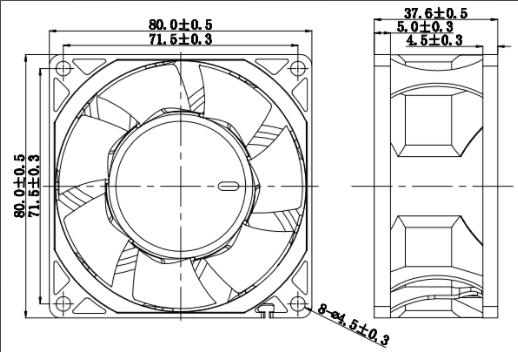
2.Key Strategies to Extend Micro Fan Lifespan
Extending the service life of a micro fan isn’t just about selecting a high-quality unit—it requires a holistic approach that considers its application context, thermal dynamics, electrical environment, and maintenance discipline. The following strategies offer practical, data-informed ways to maximize performance and reliability over time.
2.1 Choose the Right Micro Fan for the Right Environment
Environmental compatibility is one of the most critical yet often overlooked factors affecting fan longevity. When deployed in outdoor, dusty, or high-humidity conditions, miniature fans must offer sufficient ingress protection. Selecting units with appropriate IP ratings—such as IP54 or IP67—ensures better resistance to moisture, fine particulates, and corrosive vapors, all of which can degrade internal components.
Additionally, for thermally demanding environments—such as enclosed power electronics, LED drivers, or industrial machinery—fans should incorporate high-temperature-tolerant plastics and durable bearing systems, like dual ball bearings. These materials and designs reduce the risks of thermal warping, lubricant breakdown, and structural fatigue caused by long-term heat exposure.
2.2 Use PWM Speed Control to Minimize Wear
Continuous full-speed operation may deliver maximum airflow but often results in premature bearing fatigue, higher acoustic output, and unnecessary power draw. By integrating PWM (Pulse Width Modulation) control, the miniature fan speed can be fine-tuned in real-time based on thermal conditions, helping the fan work smarter—not harder.
This not only lowers mechanical stress during periods of light load but also contributes to quieter operation and extended component life. Bearings, in particular, benefit from reduced RPM during idle states, helping to maintain their integrity over extended use cycles.
2.3 Implement Scheduled Cleaning and Preventive Maintenance
Even the most robust micro fans can suffer degradation if dust and contaminants are allowed to accumulate unchecked. Debris on the fan blades disrupts weight balance and airflow patterns, while clogged vents can elevate internal temperatures—both of which place additional strain on the motor and bearings.
To counteract this, a preventive cleaning schedule—typically every 3 to 6 months—should be implemented, especially in environments such as workshops, server racks, or industrial enclosures. Use dry, anti-static cloths or compressed air to clean the impeller and surrounding housing. Avoid solvents or water-based cleaning agents that may compromise seals or lubricants.
2.4 Monitor for Early Failure Indicators
Mini fans rarely fail without warning. Most breakdowns are preceded by progressive signs, such as unusual vibration, inconsistent RPM, abnormal noise levels, or erratic power consumption. Paying attention to these indicators enables predictive servicing before the issue becomes disruptive.
Where possible, use sensors to log RPM, temperature, or current draw. These allow for real-time diagnostics and can trigger alerts when anomalies are detected. Even without dedicated monitoring equipment, periodic manual checks—comparing startup speed, thermal output, and acoustic behavior—can reveal early-stage wear.
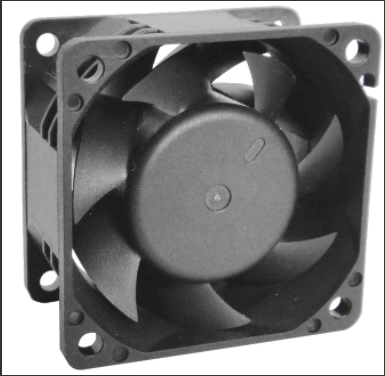
3.Micro Fan Integration Tips for Engineers
Optimizing mini fan longevity doesn’t stop at product selection—it begins with system-level design. By engineering thoughtful airflow paths, stable control logic, and effective environmental shielding, integrators can greatly enhance the reliability and lifespan of micro cooling fans. Here are some foundational design principles to consider:
3.1 Maintain Sufficient Ventilation and Unobstructed Airflow
A micro fan’s cooling efficiency is directly tied to the quality of airflow it receives and discharges. Installing fans in confined spaces or close to structural barriers can cause unwanted air turbulence, pressure buildup, and thermal inefficiencies. To ensure consistent airflow, reserve adequate space around the intake and exhaust ports—ideally at least the fan’s own diameter.
Also, avoid sealing fans inside enclosures without allowing for proper air exchange, which may lead to recirculation of warm air and heat stagnation. Proactive thermal planning helps the fan operate under lower stress, which in turn preserves its mechanical and electrical integrity.
3.2 Limit Frequent Start-Stop Behavior
Frequent fan cycling—particularly abrupt starts and stops—places avoidable strain on the motor and control circuitry. Each restart draws a surge of current and generates mechanical stress as the fan accelerates from a dead stop. Over time, this repetitive load shortens the service life of windings and bearing structures.
To avoid such issues, configure control systems (e.g., thermostat logic or microcontroller programs) with appropriate hysteresis values. This reduces the likelihood of oscillating behavior during temperature fluctuations and allows fans to complete full, stable duty cycles.
3.3 Incorporate Filtration and Blade Protection in Harsh Environments
In applications exposed to fine dust, humidity, or industrial vapors, mini fans are at risk of performance degradation. Particulate buildup on blades or inside the motor can lead to unbalanced rotation, friction, and in severe cases, electrical failure. Incorporating dust filters or protective mesh covers at air inlets offers a simple yet highly effective solution.
Choose filter materials that match the expected contaminant type and density. For instance, washable mesh or foam pads work well in general industrial settings, while Gore vents allow pressure equalization without letting in moisture or particles.
Learn more:
Looking for a reliable supplier? Learn how to choose the right industrial fan factory for your needs.
https://www.yccfan.com/articledetail/514.html
Need help selecting the perfect 80mm fan? Check out our complete buying guide for expert tips.
https://www.yccfan.com/articledetail/512.html
Discover the top 5 industrial cooling fan manufacturers to consider in 2025. Find out who’s leading the industry.
https://www.yccfan.com/articledetail/510.html
Conclusion
Extending the lifespan of micro fans requires a balance of smart selection, efficient control, environmental protection, and proactive maintenance.



